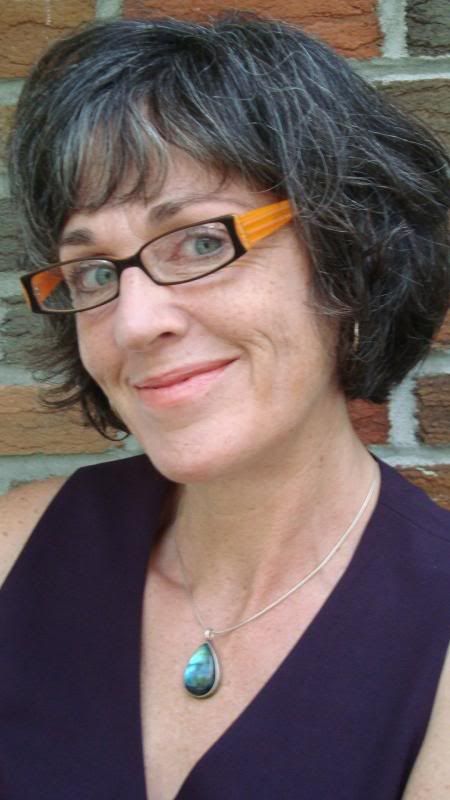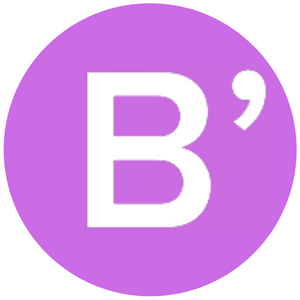 How did you come up with the idea for Annabel?
How did you come up with the idea for Annabel?A friend told me the true story of an intersex child born in a remote place. I thought about it for a long time, trying to imagine what that must have involved, for the child growing up and for the family and the village. I experimented with these thoughts by writing a short story, which later became the novel.
Why did you decide to write about intersexuality? Was it important to you to write about this subject?
I have long been interested in secrets, in underground streams, and in rivers of truth that flow beneath and around the so-called agreed upon reality mirrored in popular culture. I experienced a lot of gender tension in my own youth, and have always been interested in what comprises maleness or femaleness in the collective and the individual mind. These strains came together in my exploration of Wayne/Annabel's life.
What research did you have to do for Annabel?
My daughter was studying women's studies at Concordia University at the time, and she sent me numerous medical and technical texts outlining the kinds of procedures Wayne/Annabel might have encountered. I also studied first-person accounts written by intersex people and their families, and I have also watched a number of documentaries on the subject. In the end, however, it was important to me to balance researched medical detail with details of the kind of everyday life that any child would have experienced in that place and time. We are all male and female, and the tensions in Wayne/Annabel's story are, in my mind, familiar to all people on a deep psychological level.
In Wayne, I could see both feminine and masculine traits. He never seems to be, personality wise, stereotypically male or stereotypically female, but somewhere in between. Were you trying to say something about gender stereotypes with Wayne's personality?
I found this a challenge because I wanted to navigate terrain that was free from constraints or labels, and this kind of freedom is virtually nonexistent in the ordinary world, and in mainstream society. There is one section in the book where I feel I succeeded in really touching something elemental about this, but as a whole I feel that the book, like any real work of art, is a pointing toward, a kind of signpost, a yearning - rather than a fait accompli or some kind of solution.
I found it interesting how both Jacinta and Thomasina viewed Wayne. In their own individual ways, when away from Treadway, they gave some wiggle room for “Annabel”, Wayne's female side, to show herself. Despite Jacinta's few mentions of the daughter that could have been, neither of the two women desire Wayne to be female, but to be who he was born as, a little of both, whereas Treadway wanted Wayne to be “completely” male. When he's older, Wayne comments himself that he wishes he was allowed to simply just be. When writing this, what were your thoughts on nature vs. nurture?
I guess I was trying to explore the difference between trying to control an outcome and letting things take their natural course. Personally, I prefer the latter, as I think it makes room for miracles, for mystery, and for questions. But even in my exploration of Treadway's extreme desire to control things, I was forced to confront an ambiguity within his character, a softness and a mysterious openness that I had not realized existed. He was partly based on men I know, and writing the book made me change the way I see these men.
Annabel is set in Croydon Harbour, a remote part of Canada where there is a definite way of doing things. Do you think Wayne's story would be much different if it was set somewhere else? How much of Wayne's story would you say is down to the environment he was brought up in and how much is down to how intersexuality is seen as taboo/controversial by society generally, where ever?
I wanted the power of the land and the water to exert an influence on the story, and I think it would have been impossible for me to do this had I set the work in a city. The time, late 1960s through the 1970s, also acts as a kind of influence on social mores and constraints. I learned, during the writing, that my perceptions about what is allowable in different places and times were not necessarily accurate perceptions. In some ways, I learned, remote and rural societies like the one Wayne grew up in, would actually allow for more fluidity regarding gender, than larger towns might allow. Huge cities are a whole different story. I guess I wanted the magic of the land to be a friend to Wayne/Annabel - a source of strength.
 Instead of starting the story from Wayne's perspective when we first get to see inside his head, you give us insight into the minds of various other characters, the three main ones being Treadway, Jacinta and Thomasina, so that even if we don't agree with the choices they make or their actions, we understand them. How different do you think the story would feel if just told from Wayne's perspective? How important is the affect of their three perspectives on intersexuality on the story as a whole?
Instead of starting the story from Wayne's perspective when we first get to see inside his head, you give us insight into the minds of various other characters, the three main ones being Treadway, Jacinta and Thomasina, so that even if we don't agree with the choices they make or their actions, we understand them. How different do you think the story would feel if just told from Wayne's perspective? How important is the affect of their three perspectives on intersexuality on the story as a whole?I decided early on to tell this story as a shared story and not only an individual one. It is very much individual in that we are privy to the personal thoughts of several main characters, but I wanted very much to show how a community can cradle or shut out any one member. I wanted to explore the influences of long-held friendships, old loves, and shared memories, upon one individual who needs special consideration. To me that is more interesting than treating any one character as if s/he has an individual story divorced from everyone else's stories. This was new territory for me, since I always used to think of myself as very separate from everyone else.
What were you hoping readers would get from reading Annabel, generally and on the subject of intersexuality?
For me it was important to see Wayne/Annabel as having the right to a life that has the same beautiful texture and variety anyone's life has - the moments that go up to make the everyday, quotidian reality into something that is, in fact, sacred. I wanted Wayne/Annabel's story to be not the story of some medical freak, but the story of a soul.
Before getting your publishing deal with House of Anansi Press, did you encounter any difficulties finding a publisher due to Wayne's intersexuality?
House of Anansi was the first publisher of this work, and they have always been supportive and enthusiastic about the story. I was lucky to have an editor who had great interest in and sympathy for the story. My greatest challenge in getting published was technical: I had to work really hard to learn how to create a working structure for my story - it was not enough to have atmosphere and character, which come easily to me. I needed the story to hold the reader's heart and attention, and it has taken me a long time to learn how to do this.
Despite not being YA, Annabel focuses quite a large amount of time on Wayne's teenage years, which is what interested me in reviewing it for LGBTQ YA Month. What is your opinion on how YA novels, or novels with teenage protagonists, deal with LGBTQ themes?
I have read a lot of YA novels and I like them for their open-endedness and their sense of possibility, both technically and story-wise. But I have to say, now that you ask, I can't recall seeing LGBTQ stories addressed at all adequately in mainstream YA fiction. Perhaps this is changing - surely it must have begun to change. So I don't know. I hope it has.
Were there any books you found dealt well with this topic when you were a teen?
No. I lived in a small town and I practically had my sleeping bag set up at our local library, and I never once read or found or even saw anything that included this topic.
Are there any novels - YA or adult - featuring intersex characters that you would recommend?
Middlesex by Jeffrey Eugenides is supposed to be good, though I've not read it. I have read and loved Jeanette Winterson's works, which are often ambiguous about gender. I also love Colm Toibin's work, and the work of Ali Smith, Virginia Woolf (Orlando) and Katherine Mansfield, all gay or bisexual. My favourite writer is E.M. Forster who famously wrote cisgender-centred novels as he was not out, but whose gay novel was, I believe, published posthumously.
Anything else you would like to add?
A lot of people have asked me if Wayne/Annabel's story would be a lot different today. When I first wrote it, I thought it probably would. But since it has been published, I am surprised by the number of readers who know of secret intersex lives, children surgically “normalized” at birth (often raised as male or female without being informed about their real identity) even in this supposedly enlightened day and age. I've learned that we have not made friends with ambiguity at all. We have not even come close to doing so.
What a sad and disheartening point of end this interview on. Thank you, Kathleen, for such a fantastic interview! Be sure to check out Kathleen's blog, and Annabel, which is such an amazing story!









0 comments:
Post a Comment